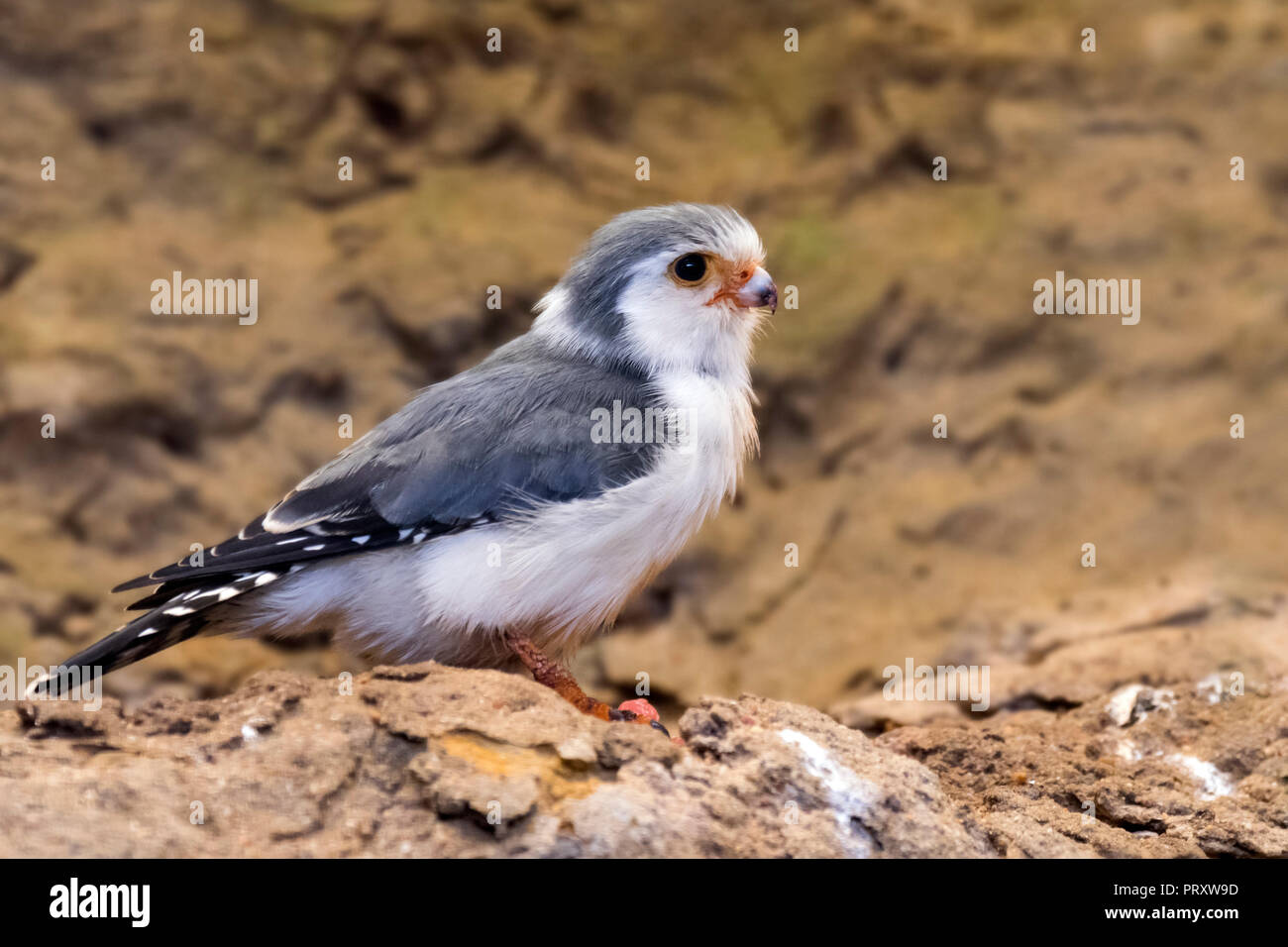

After the falcon sights its prey, it quickly dives to the ground snatching its victim in its talons, and then it returns to the perch for feeding.

It perches from a tall tree as it watches down for a food. Regardless of their size, they are a voracious predator just like birds of prey. The pygmy falcon majorly depends on insects and lizards for food but will also feed on rodents and small birds. Pygmy falcon mobility depends on the availability of weaver since they use their nesting for mating hence have very limited distribution and also its prone to prey due to its size, it can also avoid the savanna grassland habitat that is devoid to the sociable weaver bird nests. Falcons avoid forests and open edges but frequently visit huge nests of birds who they share roosting and nesting sites with. They prefer a climate that is arid or semi arid. The falcons live in two different places in Africa. Although both parents incubate the eggs for thirty days, it takes a higher toll on the female. The falcon pair evicts one to two of the weavers from their nest and the female lays around four eggs. When courting, the female falcons perform exaggerated tail wagging displays which is followed by the pair moving to the nest of a sociable weaver. Their size enables them to share a nest colony which provides a safe and weatherproof environment. Similar to the woodpecker, falcons are agile in flight and can dart through the air. The pygmy falcon is diurnal which means it is active in the morning and late afternoon but spends the majority of the day roosting. Falcon flight is low and undulating and because of its size and pattern, it perches upright in an open treetops and it usually inhabits dry bush. The flight feathers of the wing are spotted black and white while the tail is barred black and white. The females falcon has a chestnut back and white eye spot on nape while the juvenile falcon have a brown back which is duller the adult female one with a rufous wash on the breast. For instance the male adult pygymy falcon is white below and on the face while their back is grayish in colour. Physical Descriptionįalcon physique varies depending on whether or not they are male or female. They prey on insects, small mammals, and small reptiles and are six inches long on average. The pygmy falcon is the smallest type of predatory bird in Africa and can mostly be found in eastern and southern parts of the continent. The pygmy falcon is found in arid to semi-arid flat grassland areas, with scattered camelthorn trees, in the Northern Cape of South Africa and throughout the Namib.Pygmy Falcon facts - Animals of Africa A pygmy falcon in South Africa. The pygmy falcon is most active at early morning and late afternoon, roosting during the heat of the day. This cooperative behaviour is beneficial to both species, the falcon gains a readymade nest, the weaver gains protection from some predators.

The pygmy falcon is directly linked to the distribution of the sociable weaver, with the weaver nests being used for nesting and roosting.

This falcon uses the nests of sociable weavers or buffalo weavers to nest, taking over an unused nest chamber. This falcon hunts from a perch, swooping down on potential prey. The pygmy falcon’s main prey is small reptiles and insects, but will occasionally prey on small birds and rodents. The female has a chestnut back and the males have a grey back. The flight feathers are black with white spots and the tail is black with white bars. The pygmy falcon is white below and has a white face, with a grey head. The pygmy falcon is the smallest diurnal raptor, at around 20 cm in length. Pygmy Falcon - Polihierax semitorquatus Pygmy Falcon Appearance


 0 kommentar(er)
0 kommentar(er)
